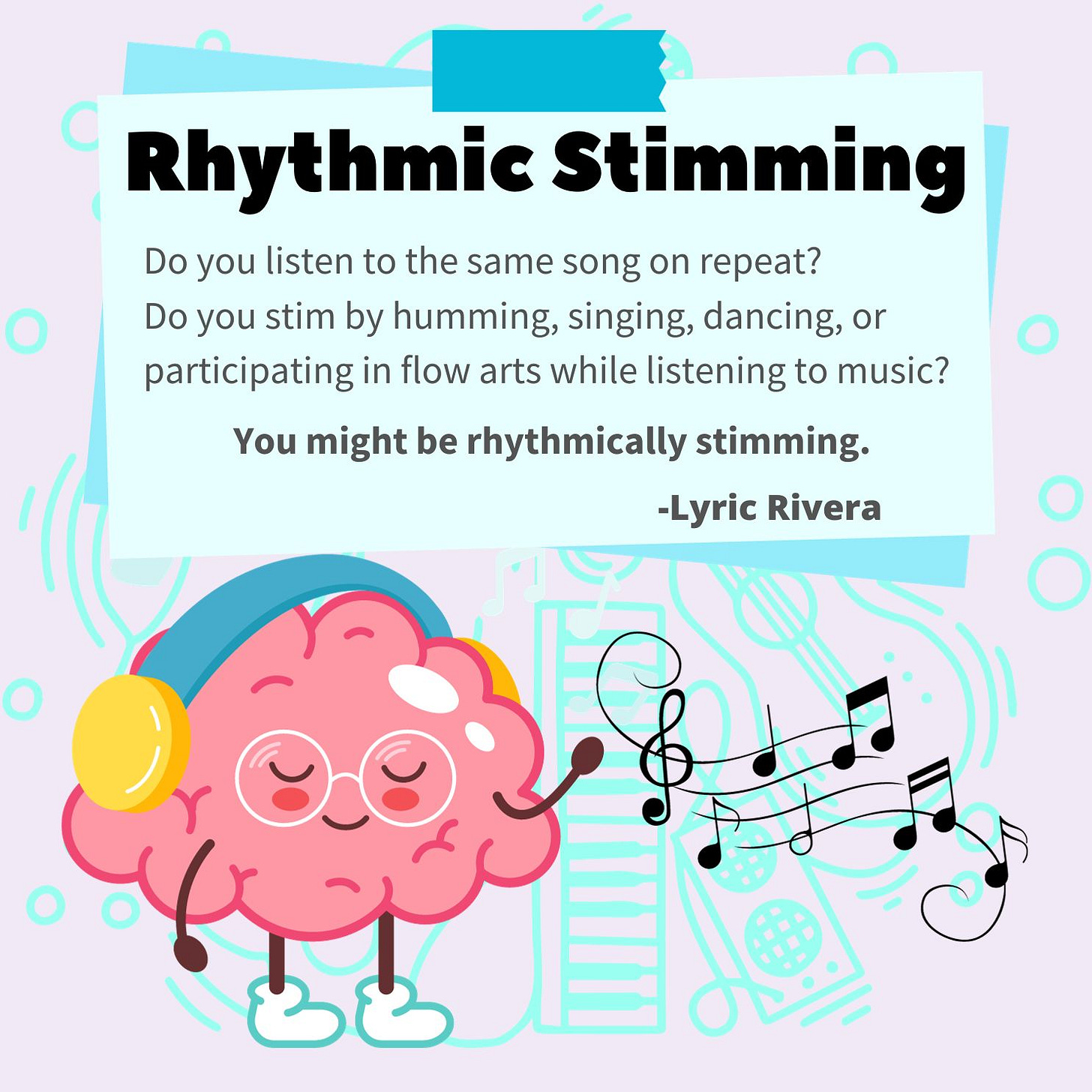Do YOU Stim with Music? Rhythmic Stimming – My Autistic NeuroDivergent Experience
Do you stim with music? Do you listen to the same song on repeat? Do you stim by humming, singing, dancing, or participating in flow arts while listening to music?
When I discovered I was Autistic, all the little pieces of my life finally began to fall into place. For the first time, I had answers to questions about why I am the way I am, and stimming was a big piece of my personal puzzle.
Stimming explained my troubles in school with teachers who wanted me silent and immobile (and why I could not provide the stillness that was demanded of me).
Stimming explained my hunger and constant need for sensory input, why pinwheels and other sensory tools had always been my favorite toys growing up, and why I still loved so many of these items just as much as an adult.
Knowing I'm Autistic has given my stimming context, meaning, and appreciation. I've learned that stimming, something I once considered an annoyance and felt a lot of shame over (since I was teased and scolded for it), is essential. It's part of who I am and serves a great and beautiful purpose in my life as an Autistic Person living in an overwhelming and often hostile world.
What IS Autistic Stimming?
Stimming is short for "self-stimulatory behavior” and is crucial to how Autistic People regulate the emotional and sensory energy that races through our bodies.
According to the National Autistic Society, stimming or "self-stimulating behavior includes arm or hand-flapping, finger-flicking, rocking, jumping, spinning or twirling, head-banging and complex body movements."
That's a medical definition of stimming. I like to look at Autism and Autistic People from a more balanced human experience and perspective.
Yes, stimming is regulatory, but it also can give onlookers a peek into the reality and emotional state of an Autistic Person. My stims can communicate things words cannot (if onlookers know what they’re looking for).
Stimming, for me, is like breathing, something I do naturally.
Like my breath, I can hold my stims, restricting myself tight, winding and bottling everything up, but eventually, the pressure builds, and the pinned-up energy must escape.
Stimming, when left to flow and not withheld, is my body's natural way of regulating energy when emotions, sensations, or discomfort is high.
Everybody stims, but Autistic People stim MORE (because many of us struggle with regulation/dysregulation - having too little or too much energy or sensation in our bodies).
Stimming and fidgeting are common responses to raised energy levels (energy created by excitement, pain, anxiety, and stress).
Many people will fidget and move from time to time, more when nervous, excited, or uncomfortable because they experience a surge of energy in their bodies when strong emotions or sensations are felt. I feel these surges of energy constantly.
Autism (and a few other forms of NeuroDivergence) can cause a person to experience an increased (or decreased) intensity of one's emotional and sensory experiences.
Stimming is essential, helpful, and necessary, but I didn't understand it for most of my life. When there’s an overwhelming sensation in our body, we can build up energy, and stimming can help release that energy.
I NEED to stim.
When I can't stim freely, the stims that pop up in place of my natural stims are stims that cause me harm and pain, such as teeth grinding, jaw clenching (so hard I get migraines), skin picking (until I bleed), and holding so much tension in my shoulders trying to keep my arms still they're chronically in pain and full of knots.
Now that I know I am Autistic, I make a point to engage in mindful and intentional stimming, especially if I need to change my state of mind to one that stimming can take me to. I am aware of some of my stims and will seek them out intentionally because of the pleasant feelings and relaxation they give me.
I like to stim with and to music - engaging in Rhythmic Stimming.
Throughout my life, I have been stimming with music (one of the main reasons I picked the name Lyric for myself) because music (and my musical stims) are an integral and essential piece of my life.
Through intentional movement (or sensory seeking), I can regulate, get excess energy out, relax, deflect my nerves, and release tension and discomfort.
Flow arts, yoga, hoop dance, and roller skating are ways I stim rhythmically, doing repetitive, unplanned movements to music.

Do you stim with music?
Do you listen to the same song on repeat? Do you stim by humming, singing, dancing, or participating in flow arts while listening to music?
You might be rhythmically stimming.
Paid subscribers have access to the full post as a thanks for their support of my work.
Keep reading with a 7-day free trial
Subscribe to NeuroDivergent Rebel’s Substack to keep reading this post and get 7 days of free access to the full post archives.



